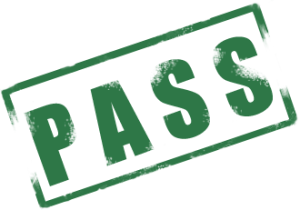

What are some key symbols of the Passover seder?

It is fundamentally a religious service set around a dinner table, where the order in which participants eat, pray, drink wine, sing, discuss current social justice issues and tell stories is prescribed by a central book called the Haggadah. Families hold a seder on the first and sometimes second night of Passover. The Hebrew word “seder” translates to “order,” and t he Passover seder is a home ritual blending religious rituals, food, song and storytelling. The Israelites were ultimately freed from slavery and wandered the desert for 40 years before making it to the promise land. Thus the name Passover, which is “pesach” in Hebrew. In order to protect their first-born children, the Israelites marked their doors with lamb’s blood so the angel of death would pass over them. The tenth and final plague is the most drastic: the killing of the first born by the so-called angel of death. Each time the Pharaoh says “no,” God sends a plague down on Egypt (darkness, lice, boils, cattle disease, etc.).
#Make a pass over free#
Moses goes to the Pharaoh and asks that he let the Jews go free from Egypt. God tells Moses to go to Pharaoh and lead the Jews out of slavery. After killing a slave master, Moses flees into the desert, and encounters a burning bush of God revealing himself to Moses. Baby Moses is saved by his mother, who floats him in a basket down the Nile river, where he is found and adopted by the Pharaoh’s daughter.

In the (very) basic Passover storyline, the Pharaoh is fearful that there will be too many Jews living in Egypt so he institutes slavery and demands that male Jewish babies be killed. And while there are myriad Haggadot to choose from to fit nearly all religious, age-specific, political or even satirical needs, the retelling of the Exodus is a key fixture in a Haggadah, along with the reading of the 10 plagues, the asking of the four questions, and explaining various Passover rituals, some of which date back 2,000 years, according to My Jewish Learning. For example, Rabbi Arthur Waskow published the “Freedom Seder” in 1969, which discussed the Civil Rights movement and the women’s movement. In contemporary Passover celebrations, relevant political or social justice themes have been incorporated into the seder. The Hebrew word “Haggadah” means “telling,” and according to My Jewish Learning, Haggadot date back to the Middle Ages. What is a Haggadah?Ī Haggadah is a book that’s read during the seder that tells the story of Passover. Passover dates for 2023 are April 5 through April 13. Exodus 12:18 commands that Passover be celebrated, “from the fourteenth day of the month at evening, you shall eat unleavened bread until the twenty-first day of the month at evening.”īecause the Hebrew calendar does not match up with the Gregorian calendar, the date of Passover (along with other Jewish holidays) changes every year. Passover takes place in early spring during the Hebrew calendar month of Nissan, as prescribed in the book of Exodus. “Not only does our modern Seder wildly diverge from the Passover of old: during antiquity itself the holiday underwent radical changes,” Gilad writes.


 0 kommentar(er)
0 kommentar(er)
